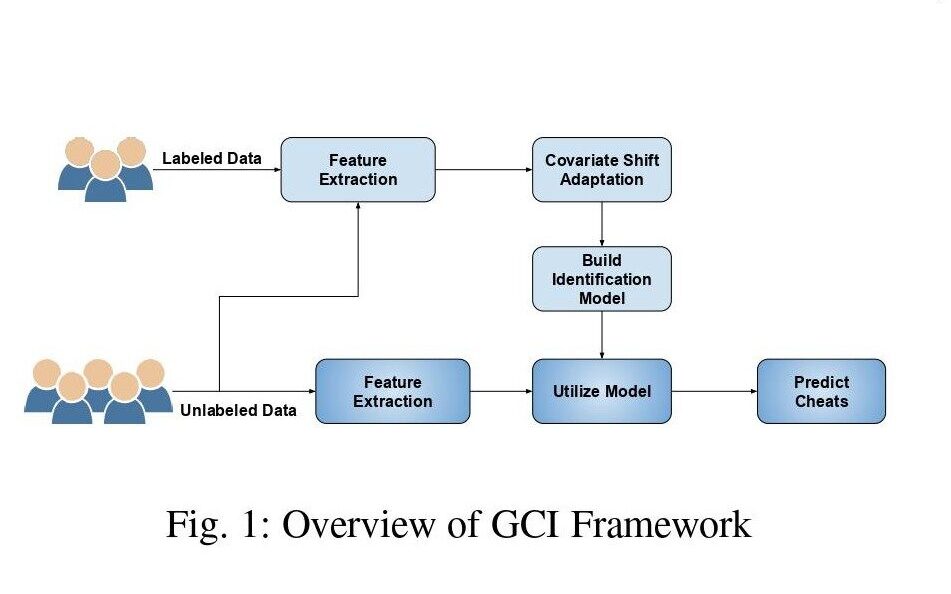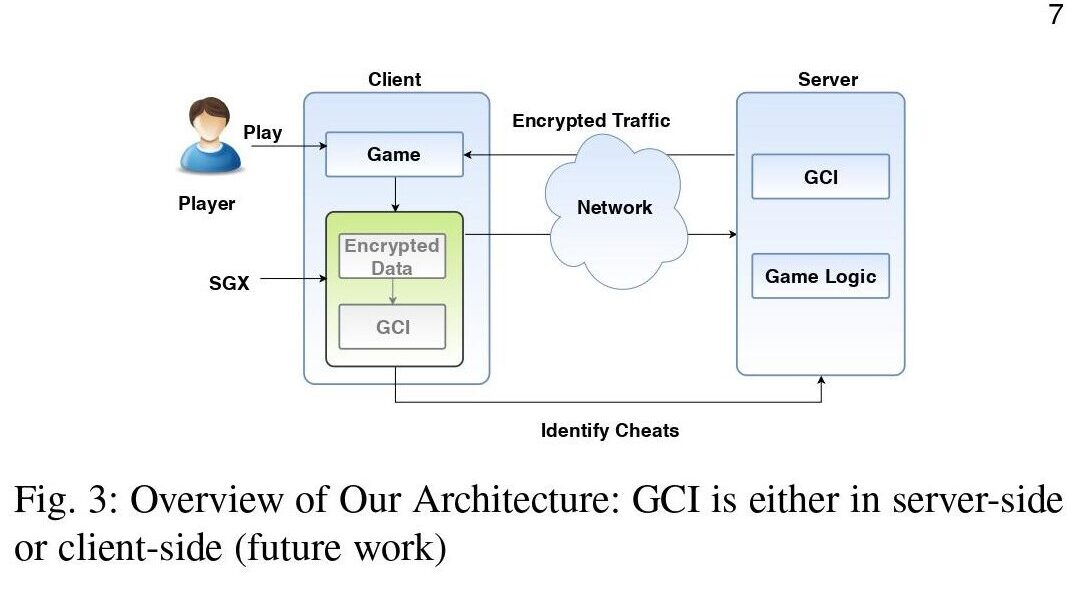The computer gaming industry is one of the largest entertainment industries today. They have a market value of thousands of billions of dollars. Such hefty sum of money is generated from millions of gamers and players all over the globe playing endlessly and tirelessly. When games like PUBG, Counter-Strike, Call of Duty, etc are played under a common server online; are called Massive Multiplayer Online Games (MMOGs). They share lots and lots of data continuously on the online server. Because of such open network, players deploy cheats while playing, either for profit or for fun.
Today, cheating while gaming is trending and it became a challenge for the developers to overcome such issues. For instance, a game player may deploy a cheating mechanism to collect a large amount of in-game virtual currency or assets by using an automated program called game bots and then trade it for real cash value. Such malicious behavior affects the overall gaming experience. More importantly, it gives unfair advantage to cheaters over other naïve players. Also, this at the end affects the popularity and image of the game in the market.

But computer scientists at University of Texas at Dallas have come up with a counteroffensive to this. They have devised a new weapon against video game players who cheat.
Let us see how computers science is all set to take down those cheaters and ending cheating in gaming.
Basics of the GCI and Approach of the Scientists
Game developers invest large amount of efforts to detect and prevent cheats that provide an unfair advantage to cheaters over other naive users during game play. Typically, Massive multiple online game (MMOG) clients share data with the server during game play. Developers leverage this data to detect cheating and mal-practices during the game play. However, detecting cheats is not easy because of limited client-side information. Also, while game software developers strive to implement mechanisms to detect various cheating behaviours for preventing them, cheaters find techniques to evade such detection mechanisms.
So, GCI literally means Game Cheating Identification.
Scientists prepared a training set which contained game traffic data of players with labels (cheats, normal). The test was then randomly splitted into two sets. One was with training set for setting up the classification model. And other for testing the performance of the entire approach.
They assumed that there exists distribution bias between training set and test set due to sampling bias. This is called covariate shift. It is basically the change in the distribution of the input variables present in the training and the test data.

Due to the assumption of covariate shift, they used Gaussian kernel model (is a complex approach. Click Here to learn more) to estimate α. It is relative density ratio associated with the training instances. Since the instance weights aid in correcting the distribution bias of training data instances, a classifier training using the weighted labelled instances can generalize well on test instances. As a result, GCI trains a classifier using the weighted training instances for label prediction on test instances. The bias correction phase terminates by producing a bias-corrected classifier. At the subsequent occurrence of every new instance along the test set, the classifier prediction is used for identify game cheaters.
Deployment of Framework into the Gaming Server
This GCI framework for cheat identification is then deployed into the game server side. This helps in cheat detection over encrypted network traffic as shown in figure below. Although the traffic is decrypted at the server-side, computer scientists aim to perform detection over encrypted traffic. Main reason for doing this to have game-independent method for cheat detection. And using decrypted network involves dependent variables, which are obviously game specific. Also, it is easier to evaluate over encrypted traffic, as most of the games are not open-source.
Since, the mechanism is not game specific, it can be deployed for cheat identification on the client side as well. Naturally, a major concern is the availability of a secure mechanism which is tamperproof. This is to prevent adversaries from compromising the detection system, or worst, disable it.

Using hardware-based cryptographically secure environments such as Intel Software Guard Extensions (SGX) has become a fascinating platform. They help to execute software securely in an untrusted environment. Intel SGX, an extension to the Intel x86 architecture, is a hardware assisted trusted execution environment that allows trusted part of an application to be executed in a secure area of memory called an Enclave.
Application developers can protect their code and data from modification or disclosure by an adversary by deploying it within an Enclave. If a gamer uses an SGX-enabled machine, we can deploy a similar cheat detection mechanism directly on the client-side, as illustrated in Figure. However, computer scientists has left its demonstration for future work.
The Role of GPU and Ending Cheating in Gaming
A GPU is a co-processor alongside the CPU, which is efficient for handling graphic specific calculations and image processing. GPU has a flexible parallel structure for high performance computing. That is why, leading vendors have turned modern GPUs into fully programmable co-processors with their own Software Development Kit. Therefore, computer scientists have utilized high memory bandwidth and powerful parallel processing capability of GPU to make their mechanism faster. And hence at the same time reduce the processing burden from the CPU.
Using GPU for GCI, performance was entire technique was improved. For the experiments, computer scientists have used NVIDIA GeForce RTX 2080 Ti GPU, which contains 4352 NVIDIA CUDA® Cores and 11 GB GDDR6 memory. The installed version of NVIDIA CUDA framework is 10.0.130.
At first, we test our GPU-based GCI technique with the normal execution of GCI. We use 10 different group of data sets and record the classification accuracy and execution time of GPU based GCI.

From the table, it is apparent that the proposed GPU-based GCI outperforms GCI in terms of execution time for both multi-class and binary data set experiments.
Summarizing and Concluding things
By monitoring the data traffic obtained from the players, researchers identified patterns that indicated cheating. They then used that information to train a machine-learning model, a form of artificial intelligence, to predict cheating based on patterns and features in the game data.
The researchers adjusted their statistical model, based on a small set of gamers, to work for larger populations. Part of the cheat identification mechanism involved sending the data traffic to a graphics processing unit, which is a parallel server, to make the process faster and take the workload off the main server’s central processing unit. The researchers plan to extend their work to create an approach for games that do not use a client-server architecture and to make the detection mechanism more secure.

Interestingly, major part of research was done by playing MMOG Counter-Strike online. Also, they utilised three gaming cheats: AimBot, Speedhack and Wallhack. AimBot automatically targets the opponents; Speedhack allows player to move faster; while Wallhack makes wall transparent which makes the player to see their opponent easily. Computer scientists have potentially succeeded in making counteroffensive against these cheats, and have ensured that games like Counter-Strike and other MMOGs remain complete fun and fair for all players. Also, while testing Counter-Strike, they gave warning and gracefully kicked the player out, if they continue with cheating during a fixed time interval.
With such interesting games out in the market, computer scientists are now also focusing and ensuring that they remain interesting. Conducting such detailed research for gaming industry, opens new paths for this fast growing multi-million dollar industry. At them same time it uplifts the level of gaming experience that developers need to provide, and which players demand for.
—OSD
For more exciting things on gaming Click Here.
To read full research paper; Click Here.




I am regular reader, how are you everybody? This article posted at this web site is actually nice.| Carolee Woodie Rochkind
Hello there. I discovered your site by means of Google while looking for a comparable topic, your site got here up. It appears to be great. I have bookmarked it in my google bookmarks to come back then. Roz Boycie Mariken
Hurrah! In the end I got a blog from where I know how to actually get useful data regarding my study and knowledge. Angelique Florian Christoph